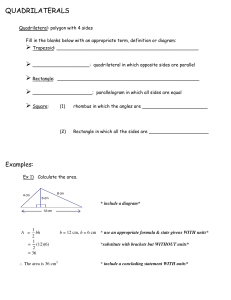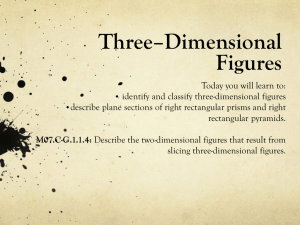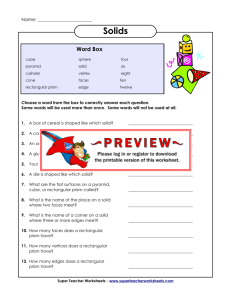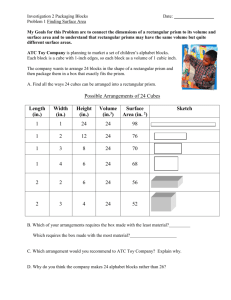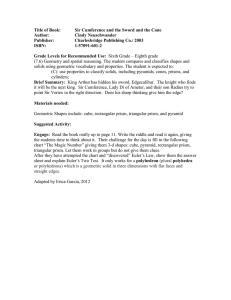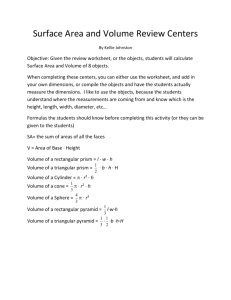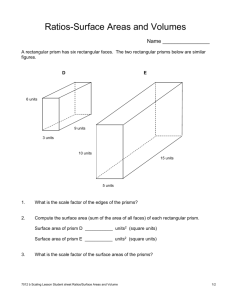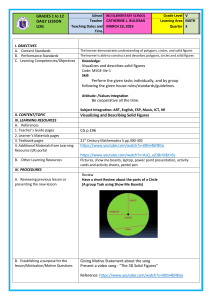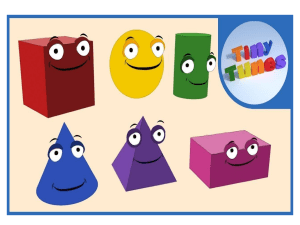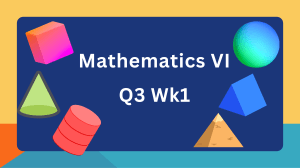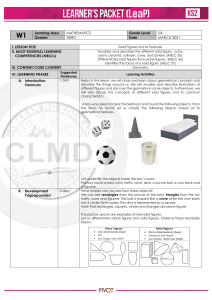Topic 10: Solids and shapes - Ashley Kirchgessner's Portfolio
advertisement
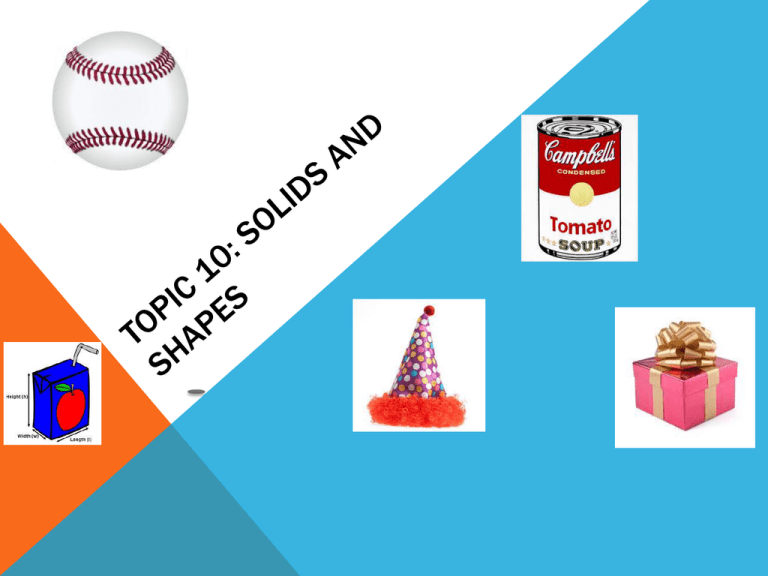
LESSONS 10-1: SOLID FIGURES Objective-I can identify solid figures by name and describe their attributes (characteristics). What is a solid figure? A solid figure is a geometric figure that has length, width, and height. RECTANGULAR PRISM Can you think of anything shaped like a rectangular prism? CUBE Can you think of anything that is shaped like a cube? PYRAMID Can you think of anything else shaped like a pyramid? CYLINDER What are some other things shaped like a cylinder? CONE What else is shaped like a cone? SPHERE What does a sphere remind you of? ALL TOGETHER NOW! Hsssss Rectangular Prism Cylinder Cube Cone Pyramid Now can you identify solid shapes? Sphere LESSON 10-2: RELATING SOLIDS AND SHAPES Objective-I can name and describe parts of solid figures. How can you describe the different parts of a rectangular prism? With your group, describe as much as you can about the rectangular prism. Use words and numbers to record what you observe. Answer the following questions: How would you describe the surface of the rectangular prism? How many surfaces are there? When you count each surface, you just counted each FACE. Each flat surface of a shape is called a face. What happens when two faces meet? The place where two faces meet is called an EDGE? What happens when edges meet? A corner where 3 or more edges meet is called a VERTEX. EXAMPLE Face-Each flat surface of a shape Edge-The area where two faces meet Vertex-a corner where 3 or more edges meet (vertices is plural for vertex) HOW AM I GOING TO REMEMBER WHICH IS WHICH? • A face is like a wall, floor or ceiling. • An edge is like the place where two walls meet or where a wall meets the ceiling or floor. • A vertex is like a corner where two walls and a floor or ceiling meet. • Maybe this video will also help! https://www.youtube.com/watch?v=BPrVAT_x1f4&list=PLje5xBZVfrCPQpFaaEpEb40fpZtY7_1u. NOW LET’S TRY ONE ON OUR OWN! Look at your cube. Let’s count the number of faces. Now let’s count the number of edges. Finally, let’s count the number of vertices. A LITTLE MORE PRACTICE! 1. Let’s do A. together. 2. Now, do B-E on your own. 3. Let’s see how you did!

